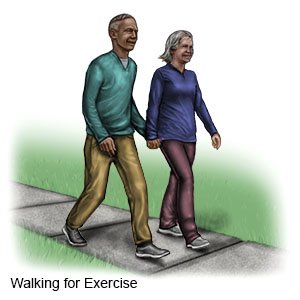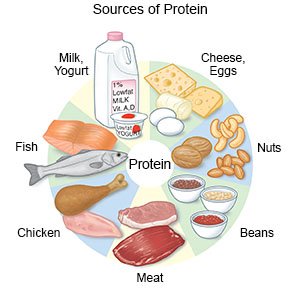Robot Assisted Roux-En-Y Gastric Bypass
Medically reviewed by Drugs.com. Last updated on Aug 4, 2025.
Robot assisted roux-en-Y gastric bypass (RYGB) is a type of weight loss surgery. The surgery is done with a machine that is controlled by your surgeon. The machine has mechanical arms that use small tools to help perform the surgery. The surgery makes your stomach permanently smaller. Food will bypass (go around) the rest of the stomach and move directly into the small intestine. You will feel full faster and have a decreased desire for food.
DISCHARGE INSTRUCTIONS:
Call your local emergency number (911 in the US) if:
- You have trouble breathing, chest pain, or you cough up blood.
Seek care immediately if:
- Your arm or leg feels warm, tender, and painful. It may look swollen and red.
- You have severe stomach pain, and your abdomen feels firm or bloated.
- You cannot stop vomiting.
- Blood soaks through your bandage or your incision sites come apart.
- Your bowel movements are black or bloody.
- Your incision site is red, swollen, or draining pus.
- Your pain does not get better with medicine, or it gets worse.
Call your doctor or surgeon if:
- You have a fever.
- You have nausea that does not get better with medicine, or it gets worse.
- You are constipated.
- You have questions or concerns about your condition or care.
Related medications
Medicines:
You may need any of the following:
- A multivitamin may be recommended by your healthcare provider or dietitian. This will help replace vitamins and minerals you may lose from eating less food.
- Acid reflux medicine helps decrease stomach acid and heartburn.
- Nausea medicine may be needed to help decrease nausea and prevent vomiting.
- Acetaminophen decreases pain and fever. It is available without a doctor's order. Ask how much to take and how often to take it. Follow directions. Read the labels of all other medicines you are using to see if they also contain acetaminophen, or ask your doctor or pharmacist. Acetaminophen can cause liver damage if not taken correctly.
- Prescription pain medicine may be given. Ask your healthcare provider how to take this medicine safely. Some prescription pain medicines contain acetaminophen. Do not take other medicines that contain acetaminophen without talking to your healthcare provider. Too much acetaminophen may cause liver damage. Prescription pain medicine may cause constipation. Ask your healthcare provider how to prevent or treat constipation.
- Blood thinners help prevent blood clots. Clots can cause strokes, heart attacks, and death. Many types of blood thinners are available. Your healthcare provider will give you specific instructions for the type you are given. The following are general safety guidelines to follow while you are taking a blood thinner:
- Watch for bleeding and bruising. Watch for bleeding from your gums or nose. Watch for blood in your urine and bowel movements. Use a soft washcloth on your skin, and a soft toothbrush to brush your teeth. This can keep your skin and gums from bleeding. If you shave, use an electric shaver. Do not play contact sports.
- Tell your dentist and other healthcare providers that you take a blood thinner. Wear a bracelet or necklace that says you take this medicine.
- Do not start or stop any other medicines or supplements unless your healthcare provider tells you to. Many medicines and supplements cannot be used with blood thinners.
- Take your blood thinner exactly as prescribed by your healthcare provider. Do not skip a dose or take less than prescribed. Tell your provider right away if you forget to take your blood thinner, or if you take too much.
- Take your medicine as directed. Contact your healthcare provider if you think your medicine is not helping or if you have side effects. Tell your provider if you are allergic to any medicine. Keep a list of the medicines, vitamins, and herbs you take. Include the amounts, and when and why you take them. Bring the list or the pill bottles to follow-up visits. Carry your medicine list with you in case of an emergency.
Self-care:
- Care for your incision sites as directed. Wear loose-fitting clothing over the area. Do not get the sites wet until your healthcare provider says it is okay. When it is okay to shower, do not scrub the sites. Just let water run over them. Dry the area and put on new, clean bandages as directed. Change your bandages when they get wet or dirty. Do not put powders or lotions over your incision sites. Check the area every day for signs of infection, such as swelling, redness, or pus.
- Be physically active as directed. Physical activity, such as walking, helps your overall health and reduces your risk for blood clots. Your provider can help you create an activity plan that works best for you.

- Go to therapy as directed. Therapy may help support changes to your diet and exercise habits. You may want to join a support group to talk with others who have had a gastric bypass.
Follow your nutrition plan:
Ask your dietitian or nutritionist any questions you have about your nutrition plan. The plan will include which foods to eat and how much of each to eat during a meal.
- Prevent dumping syndrome. Dumping syndrome happens when high-sugar or high-fat foods and drinks go into your intestine too quickly after a meal. Dumping syndrome may also occur if you drink liquids during a meal. Dumping syndrome may cause you to sweat, or feel faint, weak, and dizzy. You may have stomach cramps, an upset stomach, and diarrhea.
- Eat slowly. Chew your food well before you swallow. Large pieces of food may cause choking or may block your stomach. If you eat too much or do not chew well enough before you swallow, you may vomit.
- Eat 3 small meals each day. Do not eat snacks between meals unless your healthcare provider says it is okay. Stop eating when you feel full, even if you have not eaten all of your meal. If you eat too much and do not follow instructions, you may stretch out your stomach pouch. You may also cause a leak right after surgery.
- Eat nutritious foods. Eat plenty of protein. Foods that contain protein include chicken, fish, eggs, and dairy products. You may need protein drinks for several weeks after surgery. Avoid candy, cookies, ice cream, and fried foods.

- Drink liquids between meals. Wait at least 1 hour after a meal before you drink liquids. Do not drink liquids with meals. Drink water, diet drinks, or other drinks that have few or no calories. Do not drink carbonated liquids, such as soft drinks.
Follow up with your doctor or surgeon as directed:
You will need to have your incision sites checked. Your healthcare provider will monitor your progress and you will have your vitamin levels checked. Write down your questions so you remember to ask them during your visits.
© Copyright Merative 2025 Information is for End User's use only and may not be sold, redistributed or otherwise used for commercial purposes.
The above information is an educational aid only. It is not intended as medical advice for individual conditions or treatments. Talk to your doctor, nurse or pharmacist before following any medical regimen to see if it is safe and effective for you.
Further information
Always consult your healthcare provider to ensure the information displayed on this page applies to your personal circumstances.
